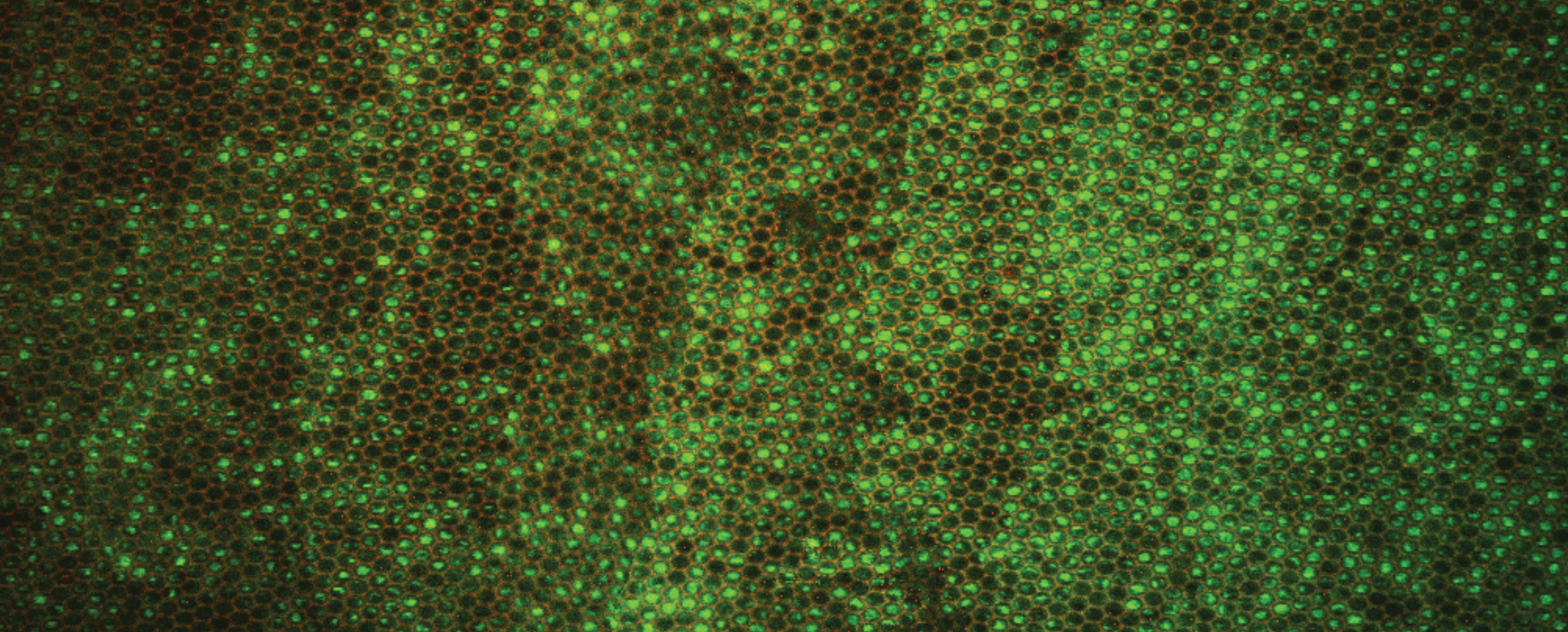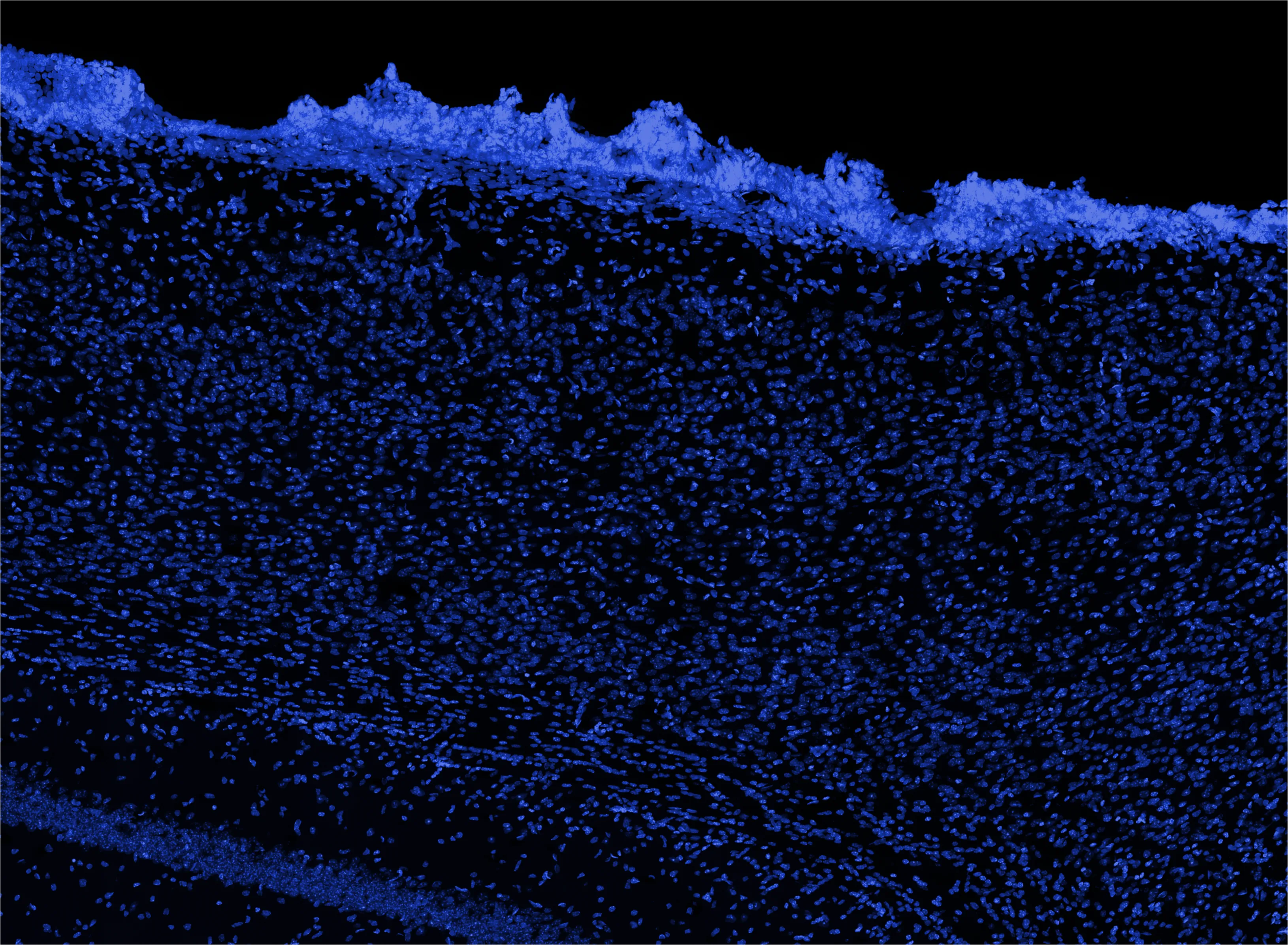Optogenetic Stimulation of a Cortical Biohybrid Implant Guides Goal Directed Behavior, by Brown et al.
Read the paper

Using hundreds of thousands of neurons anchored to the device, the Science biohybrid architecture connects to the brain with orders of magnitude more bandwidth than current state-of-the-art devices, while avoiding the damage and limitations of putting wires into a brain.
Penetrating neural probe


This image shows a very small cross section of brain tissue with cell nuclei highlighted in blue. What looks like empty space is tightly packed with axons, dendrites, and supporting cells.
Cell nuclei
The damage caused by inserting dozens of probes into the brain isn't likely to cause noticeable adverse effects. But when each probe destroys thousands of neurons, there has been a tradeoff between channel count and damage to the brain.
The cells highlighted green in this image are actual neuron axons and dendrites extending from a biohybrid engraftment, forming connections throughout the brain capable of transmitting information.
Integrated biohybrid neurons
Channel count is a measure of the number of neurons or brain regions a brain-computer interface (BCI) is able to stimulate and/or record at the same time. It is an effective measure of the capabilities of BCI devices because it represents the upper limit of information flow between brain and device.
Traditionally, BCIs are judged on the number (or “channels”) of electrodes, but neurons can be packed orders of magnitude more densely than electrodes and each one forms a multitude of connections once it reaches into the brain. Using our technology, a million embedded neurons could form a billion synapses with the brain which would provide unparalleled insights into the structure and communication patterns of our brains.
Chart data source: Stevenson Lab
Language & Communication
Motor Control
Learning & Reasoning
Read the paper

Hu et al., 2024
Rochford et al., 2023
Serruya et al., 2017
Urbanchek et al., 2016
Rochford et al., 2016
Roemer et al., 2016
Wise et al., 2011
Stieglitz et al., 2002